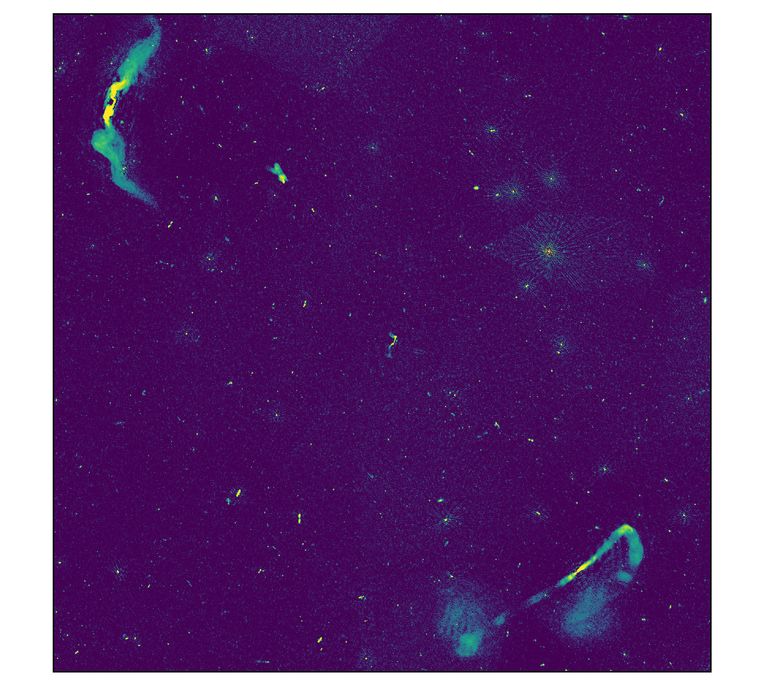
Black holes bursting with bubbles and sluggish stars: the Dutch radio telescope reveals millions of cosmic objects
You can safely call it the new mountain of cosmic information that astronomers published on Friday morning. It contains so much data that you can fill the hard drives of 20,000 laptops, and is made up of radio signals from 4.4 million objects in the universe. Including a million that the human eye has never seen before, and most new galaxies and yet-to-be-recognized giant black holes, objects so massive that not even light can escape their gravity.
astronomical candy jar
Now that astronomers have opened the proverbial lid on the second data set of the Dutch Lofar radio telescope, everyone can act. But in recent months, more than three hundred scientists involved in the measurement project have tasted the first exclusive sweets from an overflowing astronomical candy jar.
This immediately yielded dozens of new scientific insights, from first sight From black holes that spew bubbles of hot gas hundreds of thousands of light-years in size — even bigger than our own galaxy, the Milky Way — to the so-called pulsar, a star that regularly emits radio waves, But it works slower than astronomers thought was possible.
“These first analyzes are a bonus for our staff, but also a way to check if the database is really reliable,” says astronomer Timothy Shimwell (Astron).
pool bottom
Lofar is a radio telescope consisting of about twenty thousand separate antennas, the most distant in the Netherlands, which are separated by about 120 kilometers. Link the measurement data from all these measurement stations together and the result will be a powerful and accurate tool like never before.

This does not happen automatically, says astronomer Hope Ruetgering (Leiden University). For example, with each measurement you have to compensate for the movement of the Earth’s atmosphere. Looking into the depths of the universe from the surface of the Earth is a bit like lying on the bottom of a swimming pool and looking up. The water above you, or the atmosphere in our case, makes good observation very difficult.
In addition to the antennas located in the Netherlands, which is the largest part of the telescope, there are also measuring stations in Germany, France, England, Sweden and Ireland. However, these were not included in the current data, simply because the amount of data would then become uncontrollably large. To be able to analyze only Dutch data, it was necessary to develop radically new calculation methods that would make the processing more efficient.

In early 2019, the group released its first data basket. At the time, it contained “only” 2 percent of the total northern sky, an amount that actually boosts this second group significantly to 27 percent. Astronomers hope in the coming years they can unlock the rest, too.
“We now have commitments of enough monitoring time with Lofar to get to about 60 percent,” says Shimuel. For the rest, astronomers will submit their applications soon. It remains very exciting to constantly discover new things that no one has seen before. With this we will significantly increase our knowledge of black holes, the evolution of stars, and even our own Milky Way.


“Travel enthusiast. Alcohol lover. Friendly entrepreneur. Coffeeaholic. Award-winning writer.”
